1.85mm… How Did Bulgari Create the World’s Thinnest Tourbillon Watch?
We dive into the technical details of the Bulgari Octo Finissimo Ultra Tourbillon
At this point in watchmaking history, we can say, without taking too many risks, that Bulgari has become the undisputed master of ultra-thin horology. Breaking one record after another, the Italian/Swiss manufacture has been at the forefront of creativity and ingenuity, and while we are undoubtedly in a golden age of the ultra-thin watch, with records continuously being shattered, Bulgari is at the top of its game. In 2024, Bulgari released the Octo Finissimo Ultra COSC, back then the thinnest mechanical watch at 1.70mm – only to be challenged by Chaykin. Earlier this year, the brand added yet another title to its impressive list of records by presenting the world’s thinnest tourbillon watch. And in our latest in-depth video, we tell you all about the mind-bendingly thin Octo Finissimo Ultra Tourbillon.

The Bulgari Octo Finissimo series is one of the most fascinating watch collections of the last decade. This impressive saga turned Bulgari into one of the unrivalled masters of ultra-thin watchmaking, topping one record of thinness after another.
- 2014 – Octo Finissimo Tourbillon – thinnest Tourbillon movement 1.95mm – case 5.00mm
- 2016 – Octo Finissimo Minute Repeater – thinnest Minute Repeater, movement 3.12mm – case 6.85mm
- 2017 – Octo Finissimo Automatic – thinnest Automatic movement 2.23mm – case 5.15mm
- 2018 – Octo Finissimo Tourbillon Automatic – thinnest Automatic and thinnest tourbillon, movement 1.95mm – case 3.95mm
- 2019 – Octo Finissimo Chronograph – thinnest Chronograph, movement 3.30mm – case 6.90mm
- 2020 – Octo Finissimo Tourbillon Chronograph – thinnest Chronograph Tourbillon, movement 3.50mm – case 7.40mm
- 2021 – Octo Finissimo Perpetual Calendar – thinnest Perpetual Calendar, movement 2.75mm – case 5.80mm
- 2022 – Octo Finissimo Ultra – thinnest mechanical watch 1.80mm (later disputed by Richard Mille)
- 2024 – Octo Finissimo Ultra COSC – thinnest mechanical watch 1.70mm (later disputed by Chaykin)
- 2025 – Octo Finissimo Ultra Tourbillon – thinnest tourbillon watch 1.85mm
Now, let’s talk about something more specific: the ultra-thin tourbillon. The challenge here is inherent to the construction of a tourbillon, which consists of placing the regulating organ of a watch into a rotating cage revolving on itself (most of the time) once per minute, to counteract the effects of gravity on the regulator. With this in mind, the challenge is immediately apparent. A tourbillon, by definition, needs more space, both vertically and horizontally, than a traditional regulating organ.
If we look back at history, the concept of an ultra-thin tourbillon wristwatch dates back to 1986, when Audemars Piguet released the reference 25643 with the calibre 2870. This watch, at 4.8mm in thickness, was not only the thinnest tourbillon wristwatch ever made back then, but also remained the thinnest automatic tourbillon for over 3 decades, until Bulgari unveiled the Octo Finissimo Tourbillon Automatic in 2018. The latter held the records for the thinnest automatic watch and the thinnest tourbillon watch until Piaget, the other master of ultra-thin watchmaking, unveiled the 2mm Piaget Altiplano Ultimate Concept Tourbillon in April 2024.
This Piaget vs. Bulgari battle has been one of the most fascinating sagas of the past decade. This healthy rivalry, which both sides admit is a driver for innovation, has brought us many impressive watches, the next in line being this formidable accomplishment by Bulgari and its technical partner Concepto, the newest member of the OF lineup, the Octo Finissimo Ultra Tourbillon. Once again, it’s about shaving tenths of millimetres here, moving from a previously 2mm total thickness by Piaget to now 1.85mm by Bulgari. On paper, we’re talking about 0.15mm, which is hardly more than the thickness of a human hair. Marginal, isn’t it? Well, expressed in a more mathematically oriented language, you’ll see that Bulgari has reduced the thickness compared to the previous record holder by 7.5%.
At first sight, this new Tourbillon edition shares a lot with the Octo Finissimo Ultra and Octo Finissimo Ultra COSC. And rightfully so, as the design and technical concept are clearly derived from these two watches, also conceived with Concepto. This non-tourbillon version already pushed the limits of ultra-thin manufacturing to the highest level, trimming down the components and working with the most extreme tolerances. The new OF Ultra Tourbillon retains the same basic principles, first by avoiding different layers in the watch architecture and by rearranging all functions on the same horizontal plane, second by using the caseback as the main plate for the movement – something that Piaget also uses on the Altiplano Ultimate.
But that’s nothing new here. However, look closer at the OF Ultra Tourbillon and you’ll see some major differences with the non-tourbillon editions, starting with the display and the position of the regulating organ. This is explained by the space required by the tourbillon, which is, as said above, a technical nightmare for engineers, as a tourbillon carriage, by nature, implies in a conventional construction to be held by its underside, plus an upper bridge, eventually (which can be removed in the case of a flying tourbillon). But, as you’ve now understood, there’s nothing conventional in the conception of this watch, and in particular the geometry of its tourbillon regulator.
So how did Bulgari achieve a total thickness of only 1.85mm for a tourbillon watch? Well, this is exactly what we discuss with Fabrizio Buonomassa Stigliana, Product Creation Executive Director, and Philippe Saltarski, Development and Quality Assurance Director, in our latest in-depth video, which you can enjoy at the top of this article. Believe me when I say that, from a technical perspective, it is absolutely mind-blowing.
For more details, please visit bulgari.com.



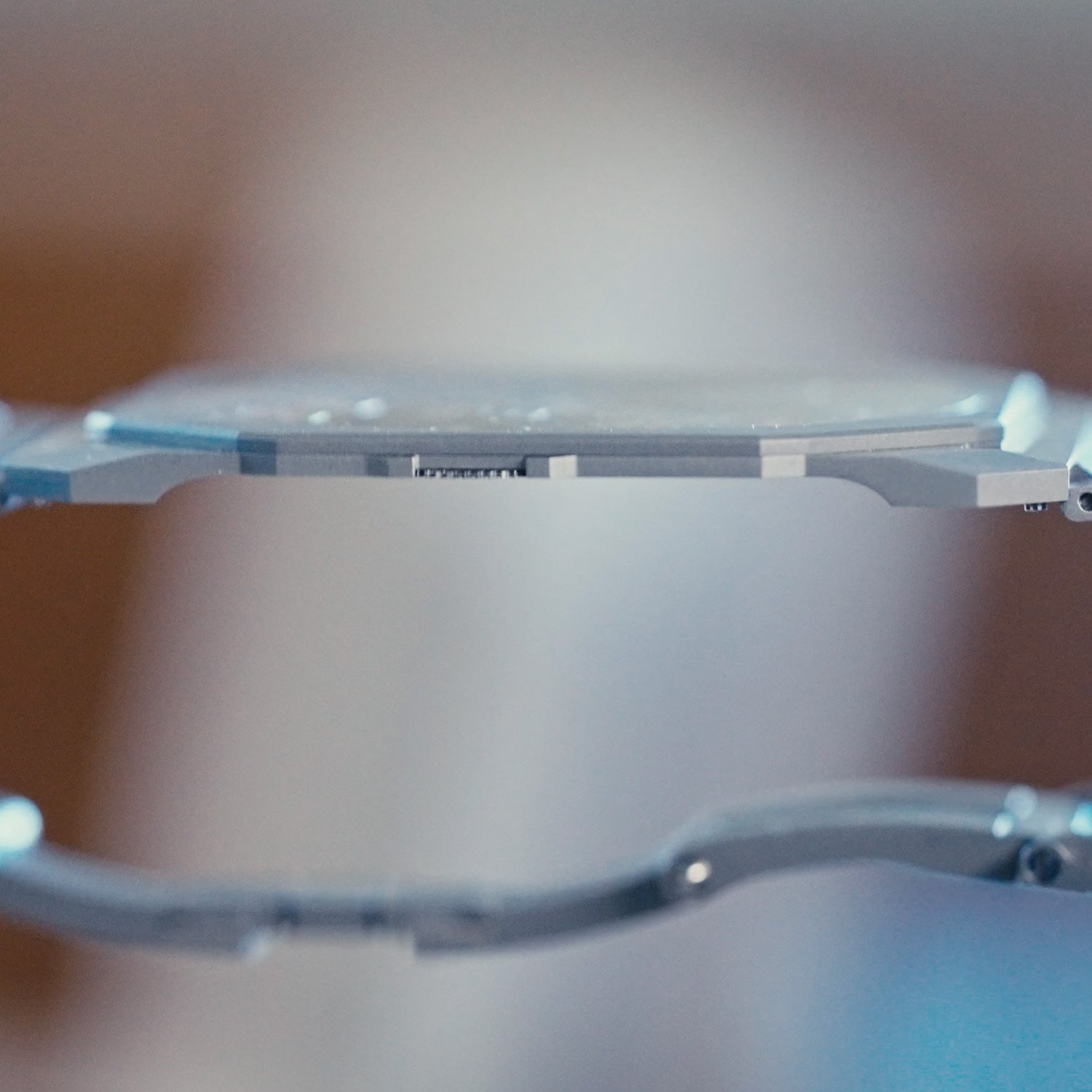

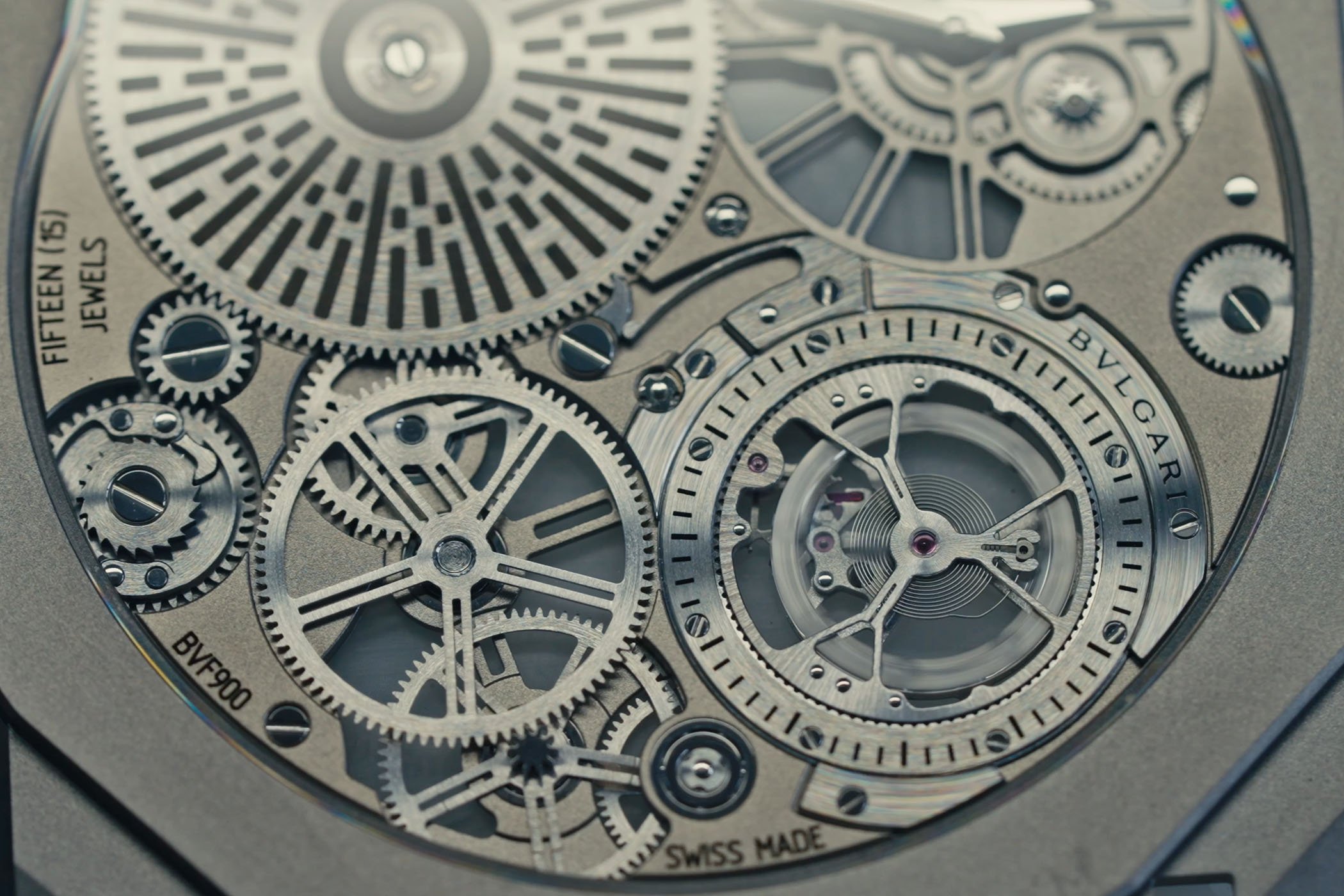
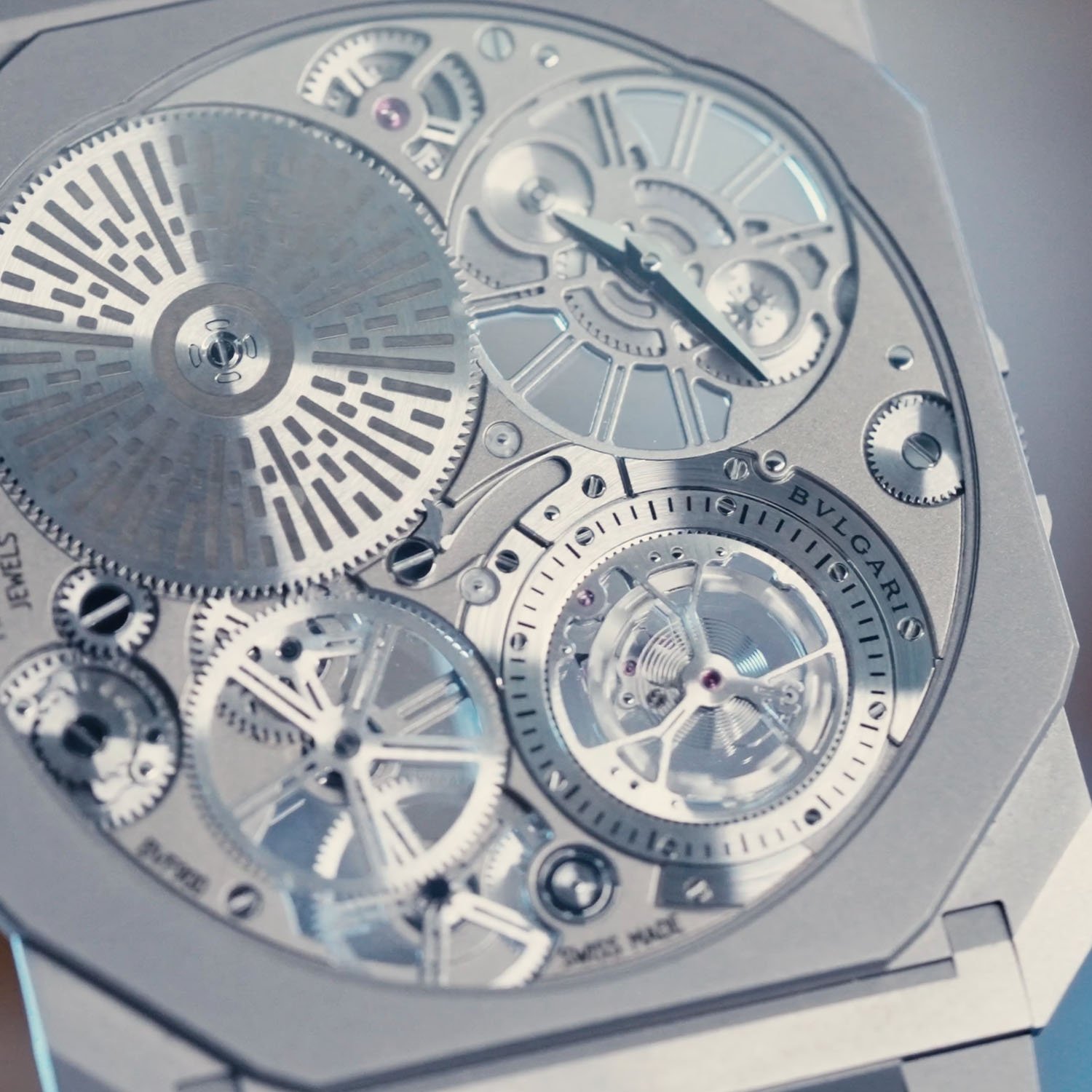
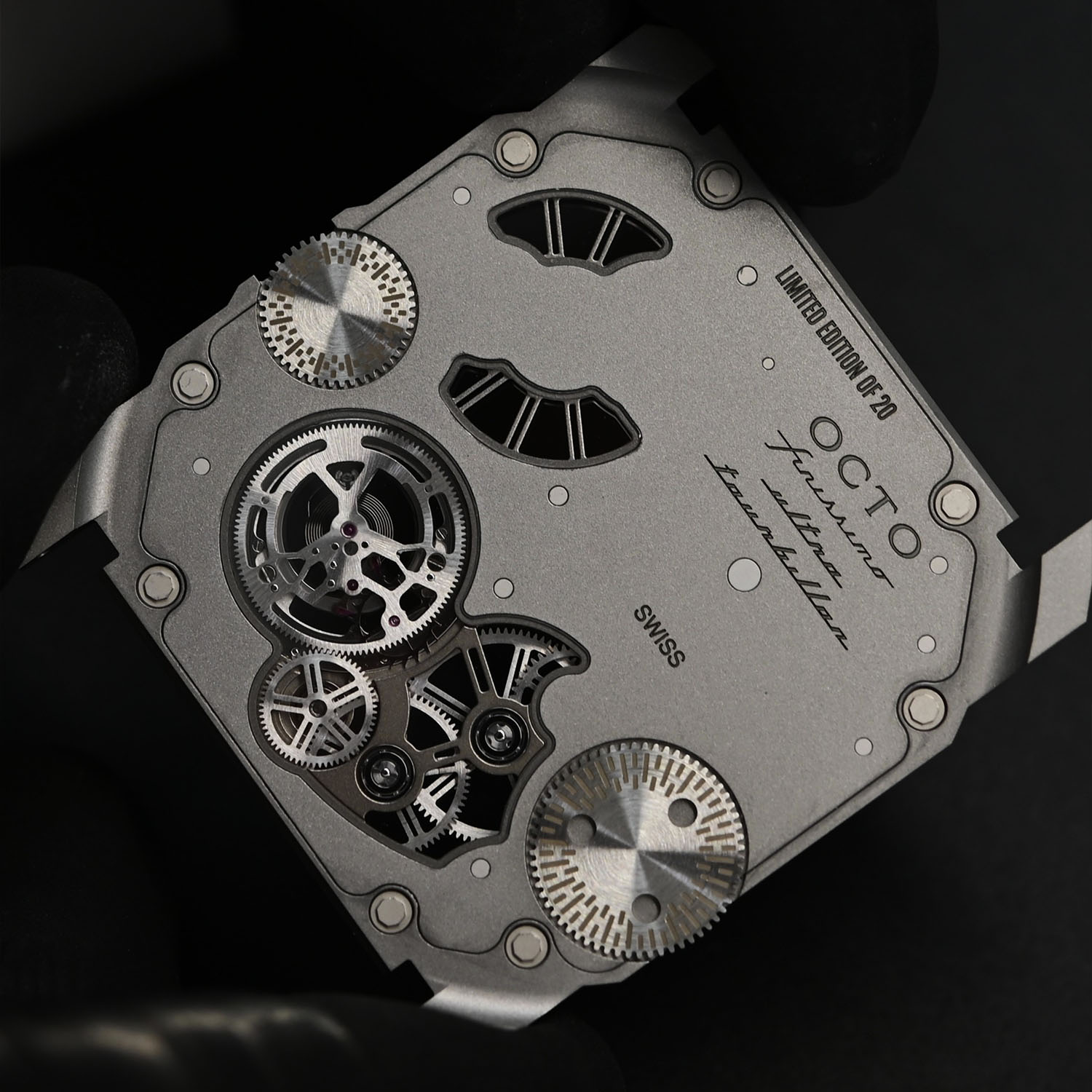
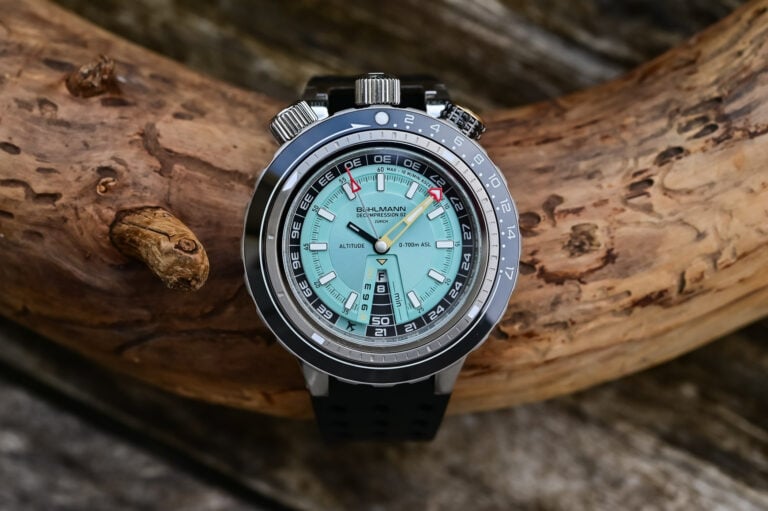
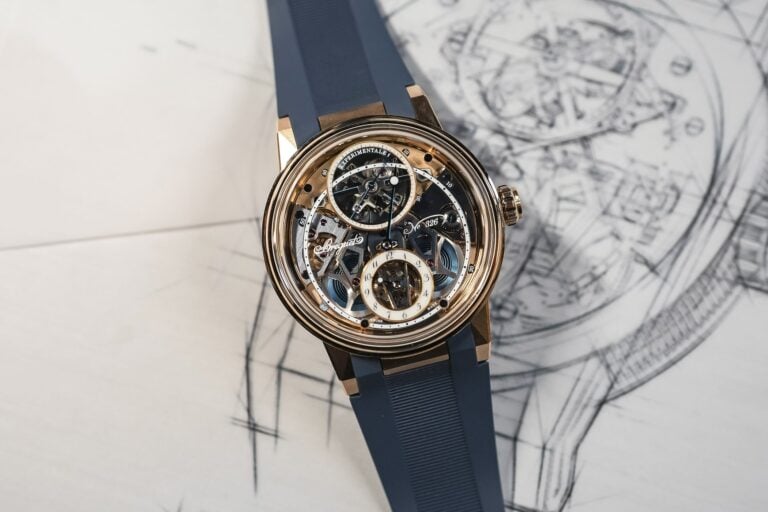
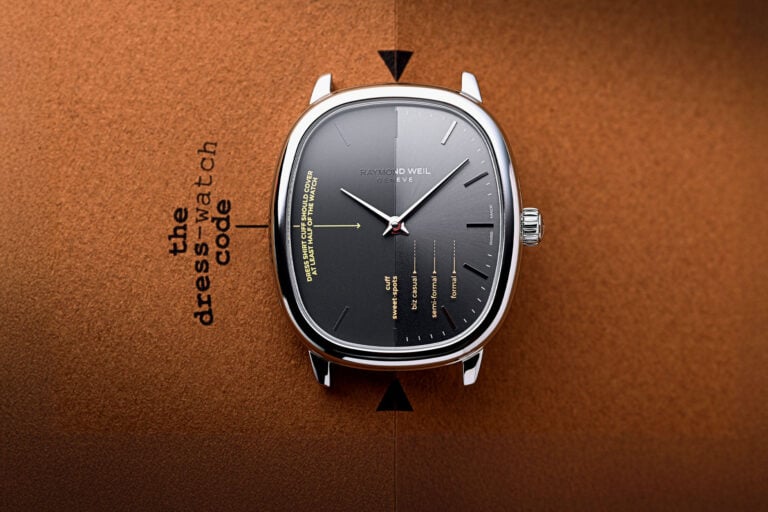
1 response
All of this and yet Omega can’t seem to make an automatic chronograph less than 14mm.